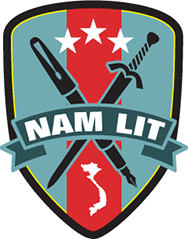 |
||||||||||||
|
November/December 2015 The Vietnam War Literary Canon BY MARC LEEPSON
We couldn’t have been more wrong—especially about the literature of the Vietnam War. “Arts of War” lives online. And to this day we continue to run “Books in Review” in every issue of the print edition of the magazine. In May 2011 we started a “Books in Review II” column online. In four-and-a-half years we have reviewed nearly seven hundred books there. The attention we have paid to books over the last three decades is a reflection of the fact that the Vietnam War has produced a large body of extraordinary literature. The literary stream began as a trickle in the late 1970s, picked up momentum in the 1980s and ’90s, and continues steadily to the present day—fueled in large part by the burgeoning number of self-published books by Vietnam veterans as they reach retirement. The Vietnam War literary canon today includes scores of highly acclaimed novels, short stories, literary nonfiction, and poetry. And then there’s this: A huge percentage of the Vietnam War American literary pantheon has been produced by veterans of the conflict. Those veteran novelists and poets have produced a body of war literature that easily matches in quantity, and exceeds in quality, the war-influenced literature by those who took part in America’s other conflicts—a group that includes such literary masterpieces as Norman Mailer’s The Naked and the Dead, Joseph Heller’s Catch 22, James Jones’s The Thin Red Line, and Kurt Vonnegut’s Slaughterhouse Five.
Here’s a snapshot of the upper echelon of the Vietnam War literary canon. The list includes, in chronological order: Navy veteran Robert Stone’s National Book Award winner, Dog Soldiers (1974); former Vietnam War combat engineer Joe Haldeman’s sci-fi classic, The Forever War (1974); one-time 25th Infantry Division trooper Larry Heinemann’s autobiographical novel, Close Quarters (1977); former infantryman Tim O’Brien’s ambitious first novel, Going After Cacciato (1978), a National Book Award winner; Marine Lt. James Webb’s Fields of Fire (1978); and one-time Marine EM Gustav Hasford’s The Short-Timers (1979), which begat the movie Full Metal Jacket. Former 101st Airborne Division combat correspondent John Del Vecchio’s The 13th Valley (1982); intel analyst Stephen Wright’s Meditations in Green (1983); Airborne Ranger Kenn Miller’s Tiger the Lurp Dog (1983); novelist and short story writer Bobbie Ann Mason’s In Country (1985); Heinemann’s National Book Award winner, Paco’s Story (1986); former Marine Larry Brown’s Dirty Work (1988); one-time Navy Corpsman Richard Currey’s Fatal Light (1988); Walter Dean Myers’s Fallen Angels (1988), a young adult in-country war novel; draftee Army clerk David Willson’s comic war novel, REMF Diary (1988); Hasford’s surreal The Phantom Blooper (1990); Tim O’Brien’s The Things They Carried (1990), the most highly praised and widely read book of Vietnam War fiction; former Army intelligence EM Robert Olen Butler’s Pulitzer-Prize-winning linked short stories, A Good Scent from a Strange Mountain (1992); novelist Stewart O’Nan’s The Names of the Dead (1996); novelist Denis Johnson’s National Book Award-winning Tree of Smoke (2004); and former Marine Lt. Karl Marlantes’s Matterhorn (2010). What follows is a group of essays that provide a wide-ranging and insightful look at different aspects of the remarkable and unique body of Vietnam War literature. Former Marine Philip Caputo takes a look at how a writer’s service in a war cannot help but influence everything he or she creates on the printed page. Former Army draftee David Willson examines the place of rear-echelon troops in Vietnam War lit. One-time Vietnam War Army nurse Sue O’Neill reviews the prolific work of another Army nurse, Elizabeth Ann Scarborough. Marine Wayne Karlin explains how to teach Vietnam War literature to 21st century college students. One-time Army infantryman and novelist John McDonald delivers an impressionistic look at creating Vietnam War fiction. And archivist and college professor Brian McNerney looks at readers’ reactions to the work of Tim O’Brien. These articles, taken together, are not the definitive look at Vietnam War literature. They weren’t meant to be. But they do provide many and varied insights into the literary legacy of America’s most controversial overseas war.
|
||||||||||||
|
|
||||||||||||
|
||||||||||||
8719 Colesville Road, Suite 100, Silver Spring. MD 20910 | www.vva.org | contact us |
||||||||||||





















 Thirty years ago the editor of The VVA Veteran asked me if I would write a column on the arts and the Vietnam War. We had a feeling there would be plenty to write about. Still, we weren’t sure we could fill an entire column every issue with reviews and news about books, movies, plays, TV shows, documentaries, paintings, and other artistic endeavors dealing with the Vietnam War and its veterans.
Thirty years ago the editor of The VVA Veteran asked me if I would write a column on the arts and the Vietnam War. We had a feeling there would be plenty to write about. Still, we weren’t sure we could fill an entire column every issue with reviews and news about books, movies, plays, TV shows, documentaries, paintings, and other artistic endeavors dealing with the Vietnam War and its veterans.